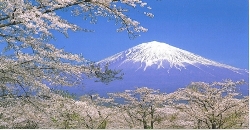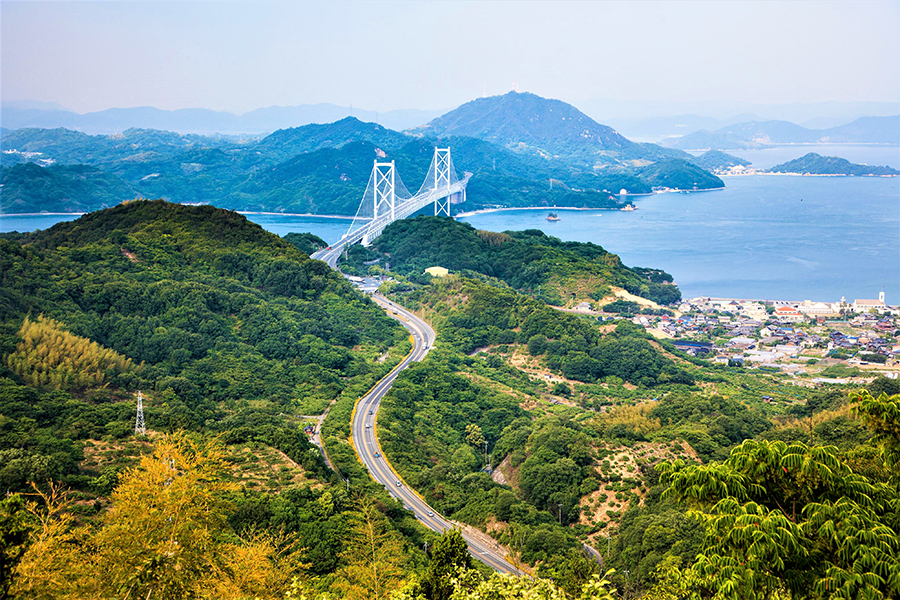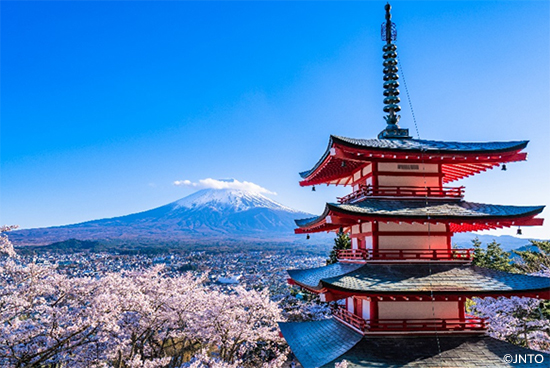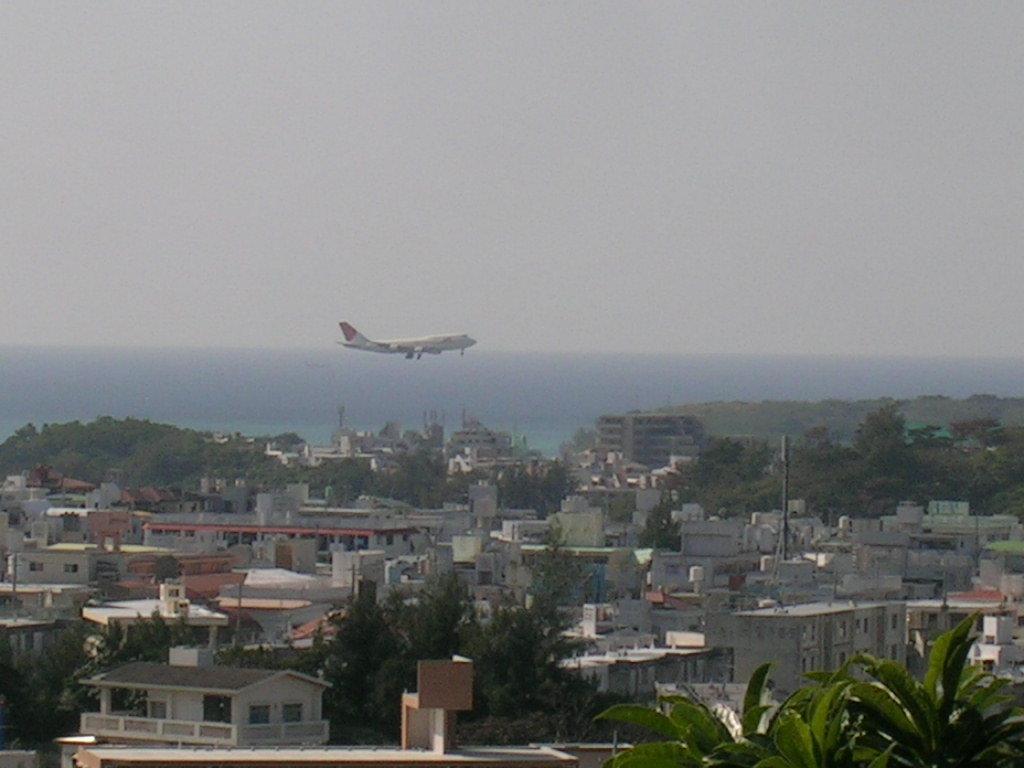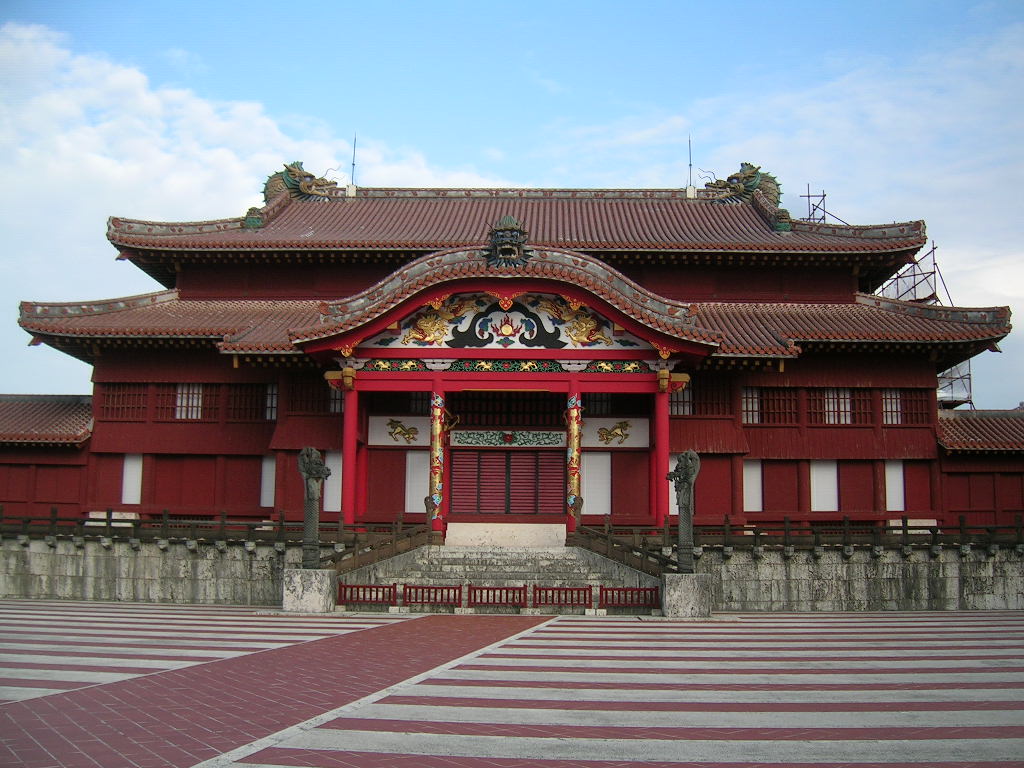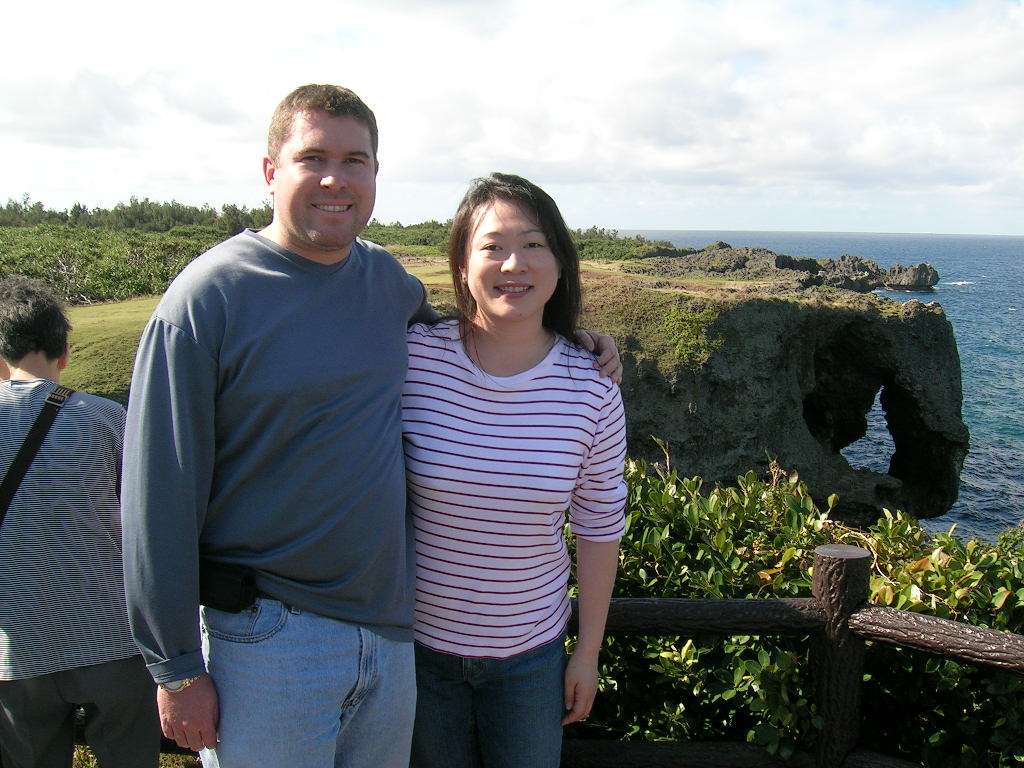Mensoure! (Welcome said in Okinawa's indigenous language). My first indication that my wife and I were in for a uniquely Japanese travel experience was when I noticed how slow and low the Japan Airlines 747-400 jumbo jet was moving upon our decent into Okinawa's Naha International Airport. I later learned that this is done due to the large U.S. military presence that occupies Okinawa. To avoid each other, military aircraft conduct operations around Okinawa at the higher altitudes while commercial aircraft fly at the lower altitudes.
While in Japan, a side trip to Okinawa is an excellent opportunity to see a different part of Japan. Regrettably, too many foreigners fly into Tokyo's Narita Airport and never get beyond places like Ginza, Asakusa, Mount Fuji and Tokyo Tower and leave Japan with a watered-down version of Japan. Today, Okinawa has flourished as the once long-lost cousin of mainland Japan. Under control of Japan, Okinawa provides the "Land of the Rising Sun" with its most unique culture and Japan's only tropical geography, while at the same time being fully recognized as Japan's most southern prefecture and part of the Kyushu Island region. As Japan's mecca of tourism for mainland Japanese, Okinawa is the gem that has weathered the test of time maintaining a blend of Chinese, Japanese and American cultures.
Naha
The Kuriyushi Hotel is located off of Naha's International Street (Kokusai Douri) and conveniently located near the Naha Central Bus Depot and Naha's monorail system. The Kuriyushi chain has a total of three facilities throughout Okinawa with the other two facilities being luxury resorts with an oceanfront view. The downtown facility is a 3-star "Japanese Business Hotel" and has been the best hotel that I've stayed at in all of my travels throughout Japan. This hotel was available at a very reasonable price and provided a breakfast buffet, standard lodging on the spacious side and two twin-size beds. The top two floors are reserved for public bathing (sento) in addition to the shower in our room. Since the men's bathing area was on the top floor, it was refreshing to bathe under the stars and tropic sea breeze with the rumble of Naha's nightlife beneath me.
Since August 2003, Okinawa has joined the rest of mainland Japan with trains as mass transportation with their monorail system. This monorail starts at Naha Airport at the southernmost end and goes north to the rebuilt Shuri Shine. One disappointing aspect of getting around Naha was not necessarily the long waits at bus stops, which are to be expected, but the "hustling" from the taxi drivers. Throughout our stay in Naha, we must have been approached half a dozen times by taxi drivers that were waiting by the bus terminal, driving by and approaching us as we waited at the bus stop offering to take us to where we wanted to go at a higher price that the bus claiming that the bus was too slow. This is another indication that Okinawa is a unique kind of place in Japan.
Must-see places in Naha
International Street (Koukusai Douri): The heartbeat of Naha, many restaurants as well as shopping centers and tourist gift shops (omiyagiya). The night life on International Street is always bustling with clubs, bars, and cheap eateries open until the early hours of the morning.
Shuri Shine : The equivalent of the Emperor's Palace in Tokyo, Shuri Shine was the home of the king of the Ryukyu Kingdom. It has the message posted at its entry, "Rejecting all weapons, the Ryukyuans welcomed all who come to their shores with heartfelt sincerity and the utmost courtesy." The message sums up the Okinawan culture from long ago and how it has overcome its turbulent and troublesome history. Tamaudon burial site: Near the Shuri Shrine, the Tamaudon burial site displays the ancient ritual of how the Okinawans prepared the deceased. Unlike the custom of cremating as it is done in mainland Japan, in olden times, the Okinawans prepared the deceased by leaving them in a special room where they basically became a skeleton. Afterwards, their remains were placed in large bowls, then placed in tombs. On Naha's International Street was a quaint and bustling Japanese pub (izakaya), Yunangii, featuring Okinawan dishes. After a moderate wait and resorting to one of the low-tables in the front section on the restaurant, my wife and I sat snugly on the floor and dined on items such as goya (the bitter green vegetable that resembles a prickly cucumber); mozuku (the slippery seaweed that is served in ponzu sauce); soki soba (Okinawan soba that is a bit thicker than it's Tokyo equivalent) that was used in a yakisoba dish; mimiga (pig's ear), fuchanpuru (various vegetables sauteed into a breadlike sticky but dry mixture), buta no kakuni (the tender part of a pig that is cut into cubes and simmered in a miso-based special sauce and when eaten melts in your mouth), and Sanpincha (Okinawan tea that is a mix of green and jasmine teas). Instead of miso soup, we were served a clear soup. In general, Okinawan dishes have a vinegar-based flavor whereas Japanese dishes have a soy-based flavor. Of course a few bottles of Orion (The Okinawan draft beer) were consumed as well.
Historic museums in the greater Naha area
Due to historic aspects that are as compelling as Okinawa's tropical climate, unique cuisine and culture, several museums are in the Naha area. Most of these museums relate to the military conflict that took place in 1945 known as "Battle of Okinawa" or "Typhoon of Steel." The Himeyuri no Tou Museum was an all-girls school that later became a nursing school in the latter part of the Asian-Pacific War. A combination of beauty and sorrow, the Peace Memorial Tower Museum picks up where Himeyuri left off by displaying stone walls with the names of the Okinawan, Japanese, American, British, Korean and others who perished in the "Battle of Okinawa." Located next the ocean with the Peace Memorial Tower, the Okinawan Prefecture Memorial Museum is on a hill overlooking the ocean and next to the Korean monument with windmills in the background. This was the only battle fought on Japanese soil forcing civilians as young as junior high school students into battle (boys were soldiers while girls were nurses). Reminiscent of Clint Eastwood's "Letters from Iwo Jima," the Japanese Navy Underground Headquarters Museum allowed the Imperial Japanese Navy a place to conduct operations during the "Battle of Okinawa." As a veteran of the US Navy, I felt like I was onboard a Japanese warship, only underground.
How to get there, where to stay and getting around
Airfare: Delta Airlines has non-stop, daily flights from Atlanta to Narita. Since Narita is mainly the international hub servicing the Kanto Plain whereas the original Haneda Airport handles domestic air travel, it is likely that you will have to take a bus from Narita to Hanada to catch your flight to Okinawa. As a Northwest frequent flyer member, Northwest's "Japan 500 Bonus Campaign" allow its members to get 1000 miles per roundtrip when traveling by air in Japan. Since Delta and Northwest are partners, a Northwest membership will allow you to gain the miles from Atlanta on Delta as well.
Lodging: The Kuriyushi Hotel located off of Naha's International Street
Transportation: Monorail, bus, taxi and Okinawa Bus Tours. For Japanese or International driver's license holders, renting a car is probably the best travel option since the roads are far more spacious throughout Okinawa than in other places in Japan, and parking is readily available in the suburbs of Naha.
Daniel J. Stone and his wife, Mayuko have traveled to all of Japan's eight regions while serving on the Japan Exchange & Teaching Program from 2004-2007. They fled Saitama, Japan for one tropical Christmas in Okinawa and currently reside in Daniel's hometown of Greenville, SC. Text also available on the Japanese Consulate, Atlanta site: http://www.atlanta.us.emb-japan.go.jp/jettravel9.htm
Daniel J. Stone JETAA2004-2007 Saitama Prefecture















































